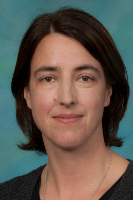Medical Image Analysis

Sarah Barman
Kingston University
Abstract: The opportunities to use imaging to assist clinicians with diagnosis and assessment of the effectiveness of treatment plans have increased rapidly over the last few decades due to developments in imaging technologies and computer processing power. Many different medical image modalities exist such as Ultrasound, Magnetic Resonance Imaging (MRI), Computed Tomography (CT), etc. Development of computer vision algorithms have allowed researchers to refine medical image analysis techniques to assist clinicians in many aspects of patient medical care and research into causes of different conditions. Examples include diverse applications that range from diagnosis of lung nodules in MRI images, to recognition of the first signs of diabetic retinopathy in screening programmes that examine retinal fundus images. The computer vision techniques employed to achieve effective medical image analysis applications, encompass many areas of research and range from machine learning approaches to morphological techniques.
The tutorial will aim to examine some of the main medical imaging modalities and describe the different computer vision algorithms applied to them. The difficulties encountered and limitations of existing work will be discussed with specific examples. Examples will be covered that illustrate how recognition of features on a medical image can assist with diagnosis of a condition. Further examples will examine how quantification of features on a medical image can assist with epidemiological research studies to understand causes and progression of the disease process.
Sarah Barman is currently an Associate Professor in the Faculty of Science, Engineering and Computing at Kingston University where she leads research into retinal image analysis and is Research Director in the School of Computing and Information Systems. After completing her PhD in optical physics at King’s College London she took up a postdoctoral position for the next four years, also at King’s College, in image analysis. In 2000 she joined Kingston University. Dr Barman is a member of the UK Biobank Eye and Vision consortium and is also a member of the Institute of Physics and is a registered Chartered Physicist. She is a member of the Program Committee of the International Conference on Image Analysis and Recognition 2015, and a Technical Committee member of the Medical Image Analysis and Understanding conference 2014. Dr Barman is a reviewer of UK research council and EU grants and held membership of the EPSRC College and Healthcare panel for six years. Current projects led by Dr Barman are funded by the Medical Research Council and Fight for Sight. Previous project funding has included support from UK research councils, the Leverhulme Trust, BUPA foundation and the Royal Society. She is the author of over 90 international scientific publications and book chapters. Dr Barman’s main area of interest in research is in the field of medical image analysis. Her work is currently focused on research into novel image analysis techniques to enable the recognition and quantification of features in ophthalmic images. Examples of this work include vessel width and tortuosity measurement on very large retinal fundus datasets, in addition to abnormality detection in diabetic retinopathy images. Dr Barman’s lecturing experience includes courses that have covered computer programming, e-health and telemedicine and project management.